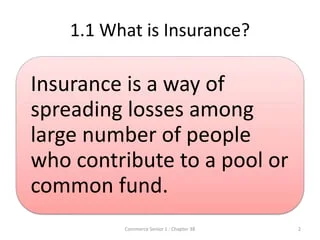All about Pacific Prime
Table of ContentsPacific Prime Can Be Fun For EveryoneThe Main Principles Of Pacific Prime Indicators on Pacific Prime You Should KnowPacific Prime Things To Know Before You BuySome Of Pacific Prime

This is due to the fact that the data were gathered for a duration of strong financial efficiency. Of the estimated 42 million individuals who were without insurance, all but regarding 420,000 (concerning 1 percent) were under 65 years old, the age at which most Americans become eligible for Medicare; 32 million were grownups in between ages 18 and 65, around 19 percent of all adults in this age group; and 10 million were kids under 18 years old, concerning 13.9 percent of all children (Mills, 2000).
These estimates of the number of individuals without insurance are created from the annual March Supplement to the Current Population Study (CPS), performed by the Census Bureau. Unless otherwise noted, national quotes of individuals without wellness insurance coverage and percentages of the populace with various sort of coverage are based on the CPS, the most commonly made use of resource of price quotes of insurance policy protection and uninsurance prices.
The Ultimate Guide To Pacific Prime

Still, the CPS is specifically beneficial since it creates annual price quotes fairly swiftly, reporting the previous year's insurance coverage approximates each September, and since it is the basis for a consistent collection of quotes for greater than twenty years, allowing for evaluation of fads in protection over time. For these factors, in addition to the comprehensive use the CPS in various other research studies of insurance policy protection that exist in this record, we count on CPS estimates, with constraints noted.

The price quote of the number of without insurance people increases when a population's insurance policy condition is tracked for several years. Over a three-year duration beginning early in 1993, 72 million individuals, 29 percent of the U.S. https://on.soundcloud.com/Boznd6XKBGjyrspT8. populace, were without coverage for at the very least one month. Within a solitary year (1994 ), 53 million people experienced at least a month without insurance coverage (Bennefield, 1998a)
6 out of every 10 without insurance adults are themselves employed. Although functioning does improve the likelihood that a person and one's family participants will have insurance policy, it is not an assurance. Even members of family members with two permanent wage earners have virtually a one-in-ten chance of being without insurance (9.1 percent uninsured rate) (Hoffman and Pohl, 2000).
More About Pacific Prime
New immigrants represent a significant proportion of people without medical insurance. One analysis has associated a considerable section of the current development in the dimension of the U.S. uninsured population to immigrants who showed up in the country between 1994 and 1998 (Camarota and Edwards, 2000). Recent immigrants (those who pertained to the USA within the previous 4 years) do have a high price of being without insurance (46 percent), yet they and their youngsters make up simply 6 percent of those without insurance nationally (Holahan et al., 2001).
The relationship between medical insurance and access to care is well established, as recorded later on in this phase. The connection this article between health insurance policy and health and wellness results is neither direct neither basic, a comprehensive medical and health solutions research study literature web links health insurance protection to enhanced access to care, far better high quality, and improved individual and populace wellness condition.
Levels of evaluation for analyzing the effects of uninsurance. This conversation of medical insurance coverage concentrates mostly on the U.S. populace under age 65 because basically all Americans 65 and older have Medicare or various other public coverage. Moreover, it focuses especially on those with no medical insurance for any length of time.
Unknown Facts About Pacific Prime
The problems dealt with by the underinsured are in some respects similar to those faced by the uninsured, although they are generally much less extreme. group insurance plans. Uninsurance and underinsurance, however, entail clearly various plan problems, and the techniques for addressing them might vary. Throughout this research study and the five records to adhere to, the primary focus gets on individuals without any health insurance and hence no aid in spending for healthcare past what is offered through charity and safety and security internet organizations
Medical insurance is an effective element affecting invoice of care due to the fact that both individuals and doctors react to the out-of-pocket cost of services - https://ameblo.jp/pacificpr1me/entry-12846866195.html. Medical insurance, nonetheless, is neither needed nor sufficient to access to medical solutions. The independent and straight impact of health insurance policy coverage on access to wellness services is well developed.
Others will get the health treatment they need also without medical insurance, by paying for it out of pocket or seeking it from companies that provide treatment totally free or at very subsidized rates. For still others, health and wellness insurance policy alone does not guarantee invoice of care as a result of various other nonfinancial barriers, such as a lack of wellness treatment companies in their area, limited access to transport, illiteracy, or linguistic and cultural differences.
The Greatest Guide To Pacific Prime
Formal research about uninsured populations in the United States dates to the late 1920s and early 1930s when the Committee on the Expense of Treatment created a series of reports concerning funding doctor workplace visits and hospitalizations. This concern became salient as the varieties of clinically indigent climbed up throughout the Great Depression.